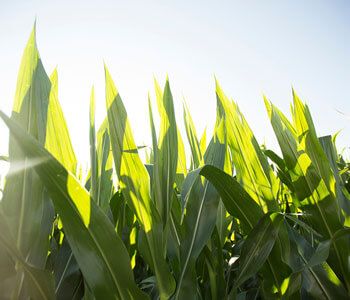Determining Fall Nitrogen Applications
Oct 29, 2020

Whether you make a nitrogen application to your corn in the fall or in the spring depends on a number of factors, including your location, the current weather and other environmental variables. You also need to consider cost. Nitrogen is generally a little cheaper in the fall, and making a fall application means one less item on your spring to-do list.
Proper timing and nitrogen application are critical for getting nitrogen to the crop and for good land stewardship. Fall-applied nitrogen must be stabilized so it doesn’t convert into a mobile nitrate form, which could carry it off-target. This is imperative if you want to protect your nitrogen investment, as well as land and water quality. Use a nitrogen stabilizer, whether or not anhydrous ammonia or urea is your nitrogen source.
Here are three tips to help determine if a fall nitrogen application is the right choice for your corn acres and, if so, the optimal timing.
1. Soil temperature
Apply fall nitrogen, along with a nitrogen stabilizer, when soil temperatures cool consistently to 50 degrees Fahrenheit and below, which is generally mid- to late October.
2. Soil texture
Medium to loamy soils are optimal for fall nitrogen applications. Soils that are sandy or contain fractured limestone with coarse to medium topsoil should not receive fall nitrogen applications because nitrogen will be lost and groundwater quality may be threatened.
3. Soil moisture
Ammonia applications work best at moderate soil moisture; however, they can also work well in dry soils with medium or heavy texture that are in good physical condition.
In-season management is key
If you are in an area that allows it, consider putting down a partial fall nitrogen application so that critical first growth stages of your following crop can benefit. Finish your nitrogen applications by monitoring plant growth with in-season imagery, nitrogen intake with tissue sampling, and soil nitrate levels with a soil test.
Applying a partial amount of nitrogen in the fall or spring prior to planting, then doing a side-dress treatment to fulfill the nitrogen needs of your crops based on in-season observations, can significantly increase potential return on investment and minimize the impact on the environment. Work closely with your agronomist to determine what is best for your particular situation.
Proper timing and nitrogen application are critical for getting nitrogen to the crop and for good land stewardship. Fall-applied nitrogen must be stabilized so it doesn’t convert into a mobile nitrate form, which could carry it off-target. This is imperative if you want to protect your nitrogen investment, as well as land and water quality. Use a nitrogen stabilizer, whether or not anhydrous ammonia or urea is your nitrogen source.
Here are three tips to help determine if a fall nitrogen application is the right choice for your corn acres and, if so, the optimal timing.
1. Soil temperature
Apply fall nitrogen, along with a nitrogen stabilizer, when soil temperatures cool consistently to 50 degrees Fahrenheit and below, which is generally mid- to late October.
2. Soil texture
Medium to loamy soils are optimal for fall nitrogen applications. Soils that are sandy or contain fractured limestone with coarse to medium topsoil should not receive fall nitrogen applications because nitrogen will be lost and groundwater quality may be threatened.
3. Soil moisture
Ammonia applications work best at moderate soil moisture; however, they can also work well in dry soils with medium or heavy texture that are in good physical condition.
In-season management is key
If you are in an area that allows it, consider putting down a partial fall nitrogen application so that critical first growth stages of your following crop can benefit. Finish your nitrogen applications by monitoring plant growth with in-season imagery, nitrogen intake with tissue sampling, and soil nitrate levels with a soil test.
Applying a partial amount of nitrogen in the fall or spring prior to planting, then doing a side-dress treatment to fulfill the nitrogen needs of your crops based on in-season observations, can significantly increase potential return on investment and minimize the impact on the environment. Work closely with your agronomist to determine what is best for your particular situation.
Source: Jonathan Zuk, Winfield United Agronomist